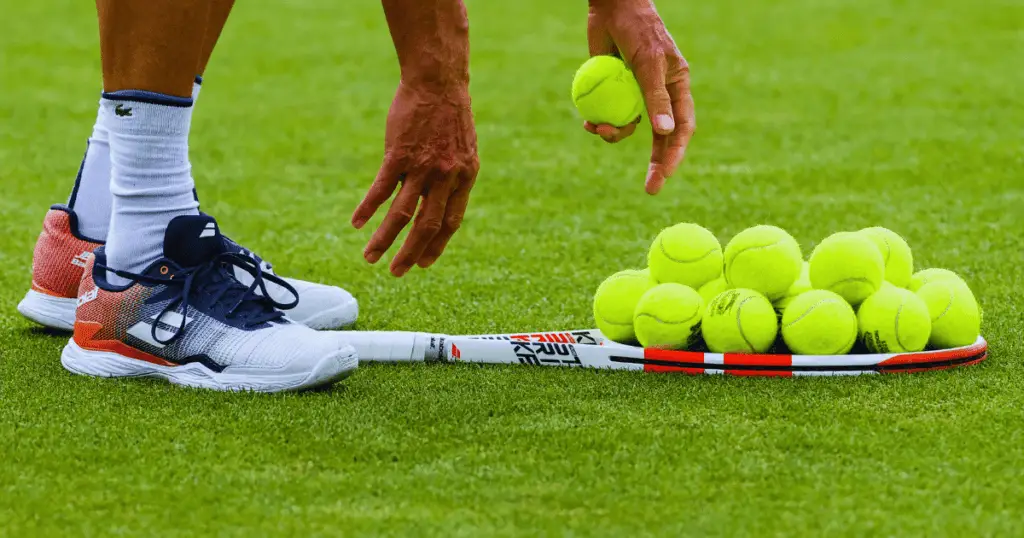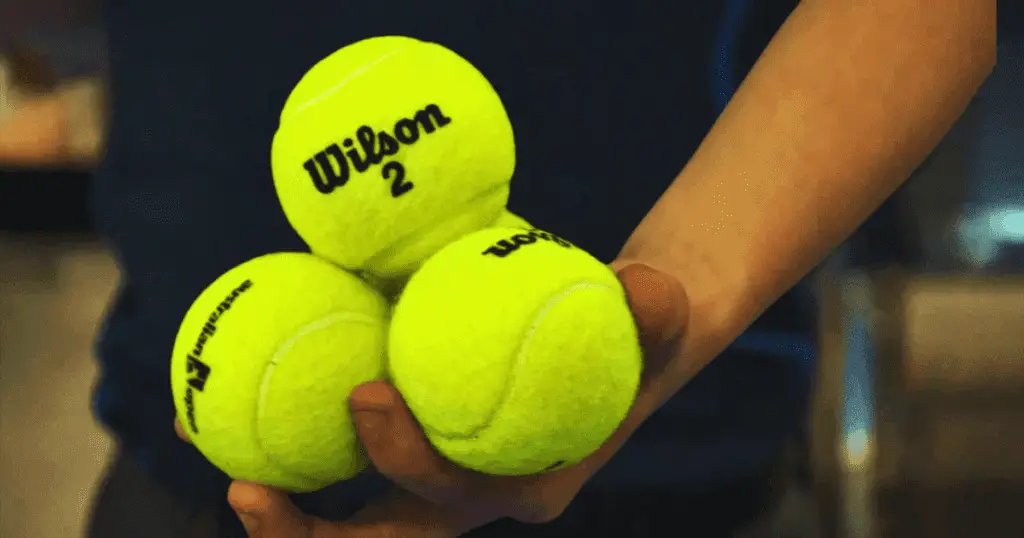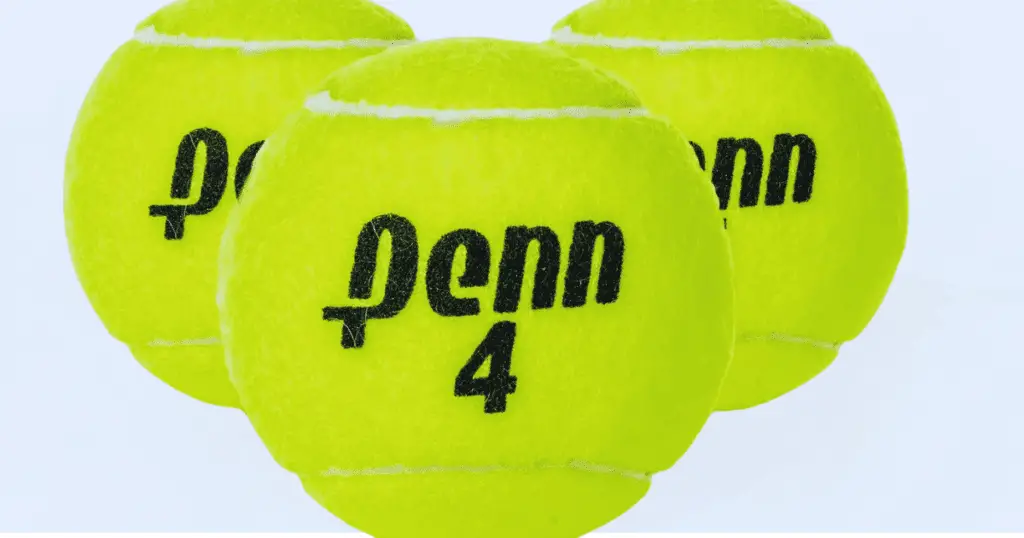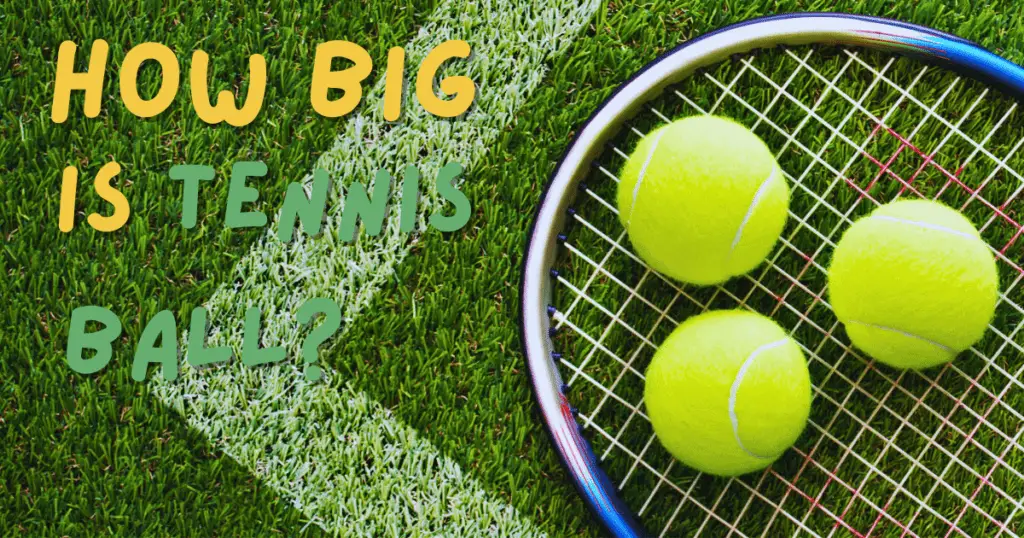Introduction
Have you ever wondered, “How big is a tennis ball?” Whether you’re a seasoned player or just starting out, understanding the dimensions of this iconic sports accessory is crucial. In this comprehensive guide, we’ll delve into the specifics of a tennis ball, covering everything from its size and circumference to standards and regulations. By the end of this article, you’ll have a clear picture of what makes a tennis ball the right fit for the game.

The Basics Size: How Big is a Tennis Ball?
A tennis ball is not just any ball; it adheres to specific standards to ensure fair play and consistent performance. The standard diameter of a tennis ball is approximately 2.7 inches (6.86 cm). This dimension is carefully regulated to maintain uniformity across the game.
The circumference of a tennis ball, another critical aspect, is around 8.5 to 9 inches (21.59 to 22.86 cm). This measurement affects the bounce and overall feel of the ball during play. If you’ve ever questioned the size of a tennis ball while watching a match, these standardized dimensions provide the answer.
Regulation Tennis Ball Dimensions
To meet the requirements of official competitions, tennis balls must adhere to strict guidelines. The International Tennis Federation (ITF) outlines these regulations, ensuring that players experience consistent gameplay worldwide. When shopping for tennis balls, look for those marked as “ITF Approved” to guarantee they meet the necessary size and weight standards.
Understanding Tennis Equipment Size
When discussing the size of a tennis ball, it’s essential to consider the broader context of tennis equipment. From rackets to courts, each component contributes to the overall experience. The diameter specifications of a tennis ball, in conjunction with racket design, influence the game’s dynamics. As you explore the world of tennis, recognizing the interconnectedness of equipment dimensions enhances your appreciation for the sport.
Tennis Ball Standards and Specifications
When investing in tennis equipment, understanding the standards and specifications is key to making an informed choice. The official tennis ball size is not just a random measurement; it’s a carefully crafted standard that contributes to the integrity of the game. Whether you’re a professional player or enjoy tennis recreationally, using balls that meet these standards ensures a consistent and fair experience on the court.
The Importance of Standard Size in Tennis Gear
Why does the size of a tennis ball matter? The answer lies in the interconnectedness of tennis gear dimensions. From the racket’s string bed to the size of the ball, each element plays a role in the overall gameplay experience. Manufacturers design rackets with specific dimensions to complement the standard size of a tennis ball, creating a harmonious synergy that enhances a player’s performance.
Buying Guide: How to Choose the Perfect Tennis Ball
Navigating the myriad options when it comes to tennis balls can be overwhelming. To simplify your decision-making process, refer to this buying guide for valuable insights:
- Recognize ITF Approval: Ensure that the tennis ball you’re considering is approved by the International Tennis Federation. This certification guarantees that the ball meets the required standards for official play.
- Match the Surface: Different tennis balls are designed for specific court surfaces. Choose a ball that complements the type of court you’ll be playing on, whether it’s clay, grass, or a hard surface.
- Consider Your Skill Level: Tennis balls are categorized based on their speed—beginner, intermediate, and advanced. Pick a ball that aligns with your skill level to enhance your playing experience.
- Review Brand Reputation: Reputable brands invest in research to create high-quality tennis balls. Explore reviews and feedback from other players to gauge a brand’s reputation before making your purchase.
Different Tennis Ball Providers
As you venture into the world of tennis, it’s essential to explore the variety of tennis balls offered by different providers. Wilson and Penn, two renowned brands, stand out for their commitment to quality and innovation. Each brand brings its own unique features and innovations to the court, catering to the diverse needs and preferences of players. Let’s take a closer look at what sets the offerings from Wilson and Penn apart.
Wilson Tennis Balls

Wilson is a globally recognized provider of top-tier tennis balls, known for their excellence in both professional and recreational play. The brand’s commitment to innovation is evident in their advanced technology, offering a diverse range of balls suited for various playing surfaces and skill levels. Wilson’s distinction as an official ball supplier for major tournaments speaks to the reliability and performance of their products. Renowned for durability and consistent play, Wilson tennis balls, including popular models like the Wilson US Open, are widely accessible and remain a preferred choice for players worldwide.
Penn Tennis Balls

Penn is a highly regarded tennis ball provider celebrated for delivering quality and reliability. With a strong presence in both professional and recreational settings, Penn tennis balls are trusted by players globally. Known for their precision and durability, Penn offers a versatile range tailored to various playing surfaces and skill levels. Resilient and long-lasting, Penn tennis balls are a popular choice for practice and competitive play, making them a preferred and accessible option for tennis enthusiasts.
Conclusion
In conclusion, the size of a tennis ball is not arbitrary; it’s a carefully crafted standard that ensures the integrity and consistency of the game. Whether you’re a professional player or someone who enjoys a casual match, understanding the nuances of tennis ball dimensions enhances your appreciation for this dynamic sport. As you embark on your tennis journey, remember to choose balls that meet the ITF standards, consider your skill level, and factor in court surface dynamics. By doing so, you’ll elevate your tennis experience to new heights, one perfectly sized ball at a time.
As we immerse ourselves in the world of tennis and explore the nuances of tennis ball dimensions, it’s impossible not to anticipate the thrilling competitions that lie ahead. The Citi Open 2023, a prestigious tennis tournament, is set to showcase the skills of some of the finest players in the sport. If you’re keen on staying updated on the exciting lineup and performances at the Citi Open 2023, dive into our detailed coverage on “Citi Open 2023 Players”.
How big is a tennis ball in inches?
The standard size of a tennis ball is approximately 2.7 inches in diameter.
How big is a tennis ball in cm?
The standard size of a tennis ball is approximately 6.86 cm (2.7 inches) in diameter. This measurement is regulated by international tennis organizations to ensure uniformity and consistency in the game.
How big is a tennis ball in mm?
The standard size of a tennis ball is approximately 67 millimeters (mm) in diameter.
Tennis Ball Weight in kg?
The standard weight of a tennis ball, as regulated by the International Tennis Federation (ITF), is approximately 0.057 kilograms or 57 grams.
Tennis Ball Color?
The traditional and most common color of tennis balls is bright yellow. The use of yellow tennis balls became widespread to enhance visibility for players and spectators. The high visibility of the yellow color against various court backgrounds, especially green and red clay or grass, improves tracking during fast-paced matches.
- How Long Do Tennis Matches Last - April 2, 2024
- Larry King Tennis - March 18, 2024
- Laver Cup 2024 - March 5, 2024


